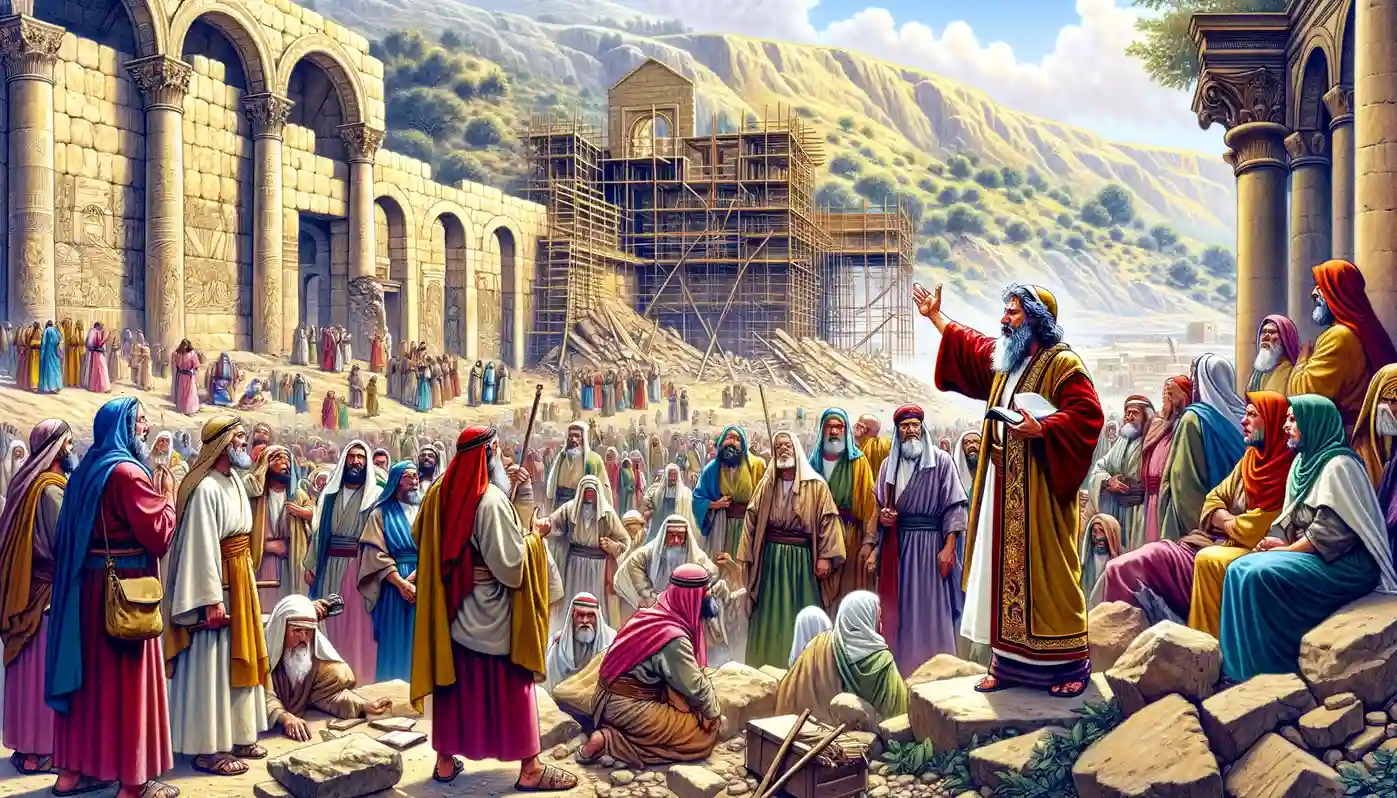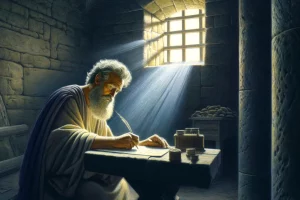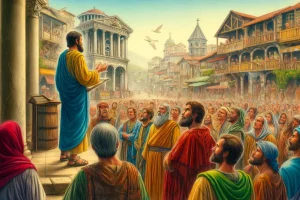
The Book of Haggai
- Categories Old Testament Books
- Comments 0 comment
The Book of Haggai is one of the shorter books among the Twelve Minor Prophets in the Hebrew Bible. Here are some key quick facts about the Book of Haggai:
- Authorship: Haggai, the prophet, is credited as the author. His name means “festive,” which is reflective of the hopeful tone of his messages.
- Historical Context: Haggai prophesied during the post-exilic period, specifically around 520 BCE, a time when the Jewish community in Judah was struggling with the reconstruction of the Temple in Jerusalem after returning from Babylonian exile.
- Themes:
- Temple Reconstruction: Haggai’s primary focus is encouraging the people of Judah to prioritize the rebuilding of the Temple, emphasizing its significance for their spiritual and communal restoration.
- Divine Encouragement and Assurance: Haggai conveys messages of encouragement and divine support for the people, promising blessings and divine presence upon the completion of the Temple.
- Structure: The book is very brief, containing only two chapters. It is organized around four main prophetic messages, each marked by specific dates, making it one of the most precisely dated books in the Old Testament.
- Key Passages:
- Haggai 1:4: “Is it a time for you yourselves to be living in your paneled houses, while this house remains a ruin?”
- Haggai 2:9: “The glory of this present house will be greater than the glory of the former house,” says the LORD Almighty. “And in this place I will grant peace,” declares the LORD Almighty.
- Literary Features: Haggai’s prophecy is direct and practical, focusing primarily on immediate action and tangible goals. It includes dialogues between the prophet and the people, and between the prophet and God.
- Theological Significance: The book highlights the importance of communal effort in religious duties, the relationship between worship and welfare, and the role of prophetic leadership in guiding and motivating God’s people.
The Book of Haggai, a brief but impactful prophetic text, plays a significant role within the Twelve Minor Prophets of the Hebrew Bible. Focused sharply on the issues pertinent to the post-exilic community in Jerusalem, Haggai’s messages are both timely and practical. Here’s a detailed analysis of this book, examining its historical context, content, themes, and theological contributions.
1. Historical Context
Haggai delivered his prophetic messages in 520 BCE, during the second year of King Darius the Great of Persia. This period marks the post-exilic phase of Judah when the Jewish community had returned from Babylonian captivity. The initial enthusiasm for rebuilding the Temple in Jerusalem, which had been destroyed in 586 BCE, had waned, and the building project had stalled due to economic hardship, political opposition, and general apathy.
2. Structure and Content
The Book of Haggai is structured into two chapters, consisting of a series of four prophetic messages, each precisely dated:
- First message (Haggai 1:1-15): Haggai calls for the resumption of the Temple building project, criticizing the people for living in “paneled houses” while the Temple lies in ruins. He connects their economic hardships to their neglect of the Temple.
- Second message (Haggai 2:1-9): Delivered during the Feast of Tabernacles, this message is meant to encourage the people by promising that the glory of the new Temple will surpass that of Solomon’s Temple, and God’s spirit will remain in their midst.
- Third message (Haggai 2:10-19): This message on ritual purity underscores that mere ritual observance is insufficient without the proper attitude towards sacred obligations—the rebuilding of the Temple.
- Fourth message (Haggai 2:20-23): Focused on Zerubbabel, the governor of Judah, this prophecy foretells that he will be God’s chosen instrument, a signet ring, signifying God’s continued commitment to the Davidic lineage.
3. Major Themes
- Urgency of Temple Rebuilding: Central to Haggai’s prophecy is the urgent call to rebuild the Temple, which he sees as key to restoring the community’s covenant relationship with God.
- Divine Presence and Promise: Haggai emphasizes that God’s presence and blessing are contingent upon the people’s willingness to honor Him through their actions, specifically in rebuilding the Temple.
- Connection Between Obedience and Prosperity: Haggai links the community’s material conditions directly to their spiritual obedience, suggesting that economic and agricultural hardships are a result of their religious negligence.
4. Literary Features
Haggai’s prophetic style is notable for its directness and immediacy. The use of rhetorical questions and direct challenges reflects a practical approach aimed at motivating immediate action. The dialogic elements in the text enhance its dynamic and persuasive character.
5. Theological Significance
Haggai’s messages reinforce the idea that spiritual commitments have tangible consequences. The book also reflects a profound understanding of communal responsibility in religious life and the role of leadership in guiding and revitalizing religious commitment.
6. Contemporary Relevance
Today, the Book of Haggai continues to speak to communities about the importance of prioritizing spiritual values and communal welfare over individual material comfort. It challenges modern readers to consider how their priorities align with their spiritual and communal obligations.
In summary, the Book of Haggai offers a compelling blend of historical insight, practical advice, and theological depth, focusing on themes that resonate with the necessity of communal integrity and the interdependence of spiritual and material well-being.
Tag:communal responsibility, Darius the Great, Davidic lineage, divine judgment, divine promise, economic hardship, economic prosperity, Feast of Tabernacles, Haggai, Jerusalem, Jewish community, King Darius, Leadership, minor prophets, Old Testament, paneled houses, post-exilic period, prophecy, prophetic messages, religious commitment, ritual purity, spiritual obedience, spiritual renewal, Temple rebuilding, Zerubbabel
You may also like

The Book of 2 Timothy

The Book of 1 Thessalonians

